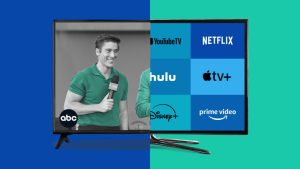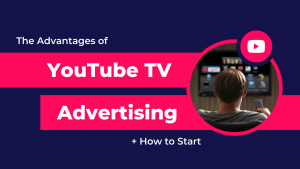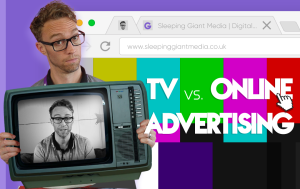
Introduction
Streaming advertising has become a key part of digital marketing. As more people choose to watch content online instead of on traditional TV, streaming platforms have found new ways to make money. One of these ways is through ads shown during videos, movies, and even music streams. But what exactly is streaming advertising, and how does it work? In this article, we’ll explain everything you need to know about it.
What is Streaming Advertising?

Streaming advertising refers to the ads you see when watching shows or videos on streaming services like YouTube, Hulu, or Spotify. These ads can appear before, during, or after the content you’re watching. Streaming ads are different from traditional TV ads because they are often targeted to specific viewers based on their interests and online behavior. For example, if you often search for sports content, you may see ads related to sports.
These platforms make money by showing ads to free users or people with cheaper subscriptions. In exchange for watching these ads, users get access to content without paying full price.
Types of Streaming Advertising

1. Pre-Roll Ads
Pre-roll ads are shown before the video starts. These ads are typically short, lasting 15 to 30 seconds. Viewers can’t skip them, so they’re an effective way to capture attention early on.
2. Mid-Roll Ads
Mid-roll ads appear during a video, much like commercials on traditional TV. They usually play when the content reaches a good stopping point. These ads are effective in keeping viewers engaged during longer content, like movies or TV shows.
3. Post-Roll Ads
Post-roll ads appear at the end of the content. While not as common as pre-roll or mid-roll, they still provide a chance to reach viewers, often promoting related content or products.
4. Display Ads
These are ads that pop up on the screen while you’re watching. Services like Spotify use display ads to show pictures or banners alongside the video or music you’re streaming.
5. Interactive Ads
Interactive ads let viewers engage with the ad, such as clicking on a banner or participating in a survey. These ads are more personalized and can encourage users to take action.
How Does Streaming Advertising Work?

Streaming advertising works by targeting specific groups of people. Here’s how it generally works:
1. Targeting the Right Audience
One of the biggest benefits of streaming advertising is the ability to target the right people. Platforms collect data about users, such as their age, gender, location, and what they like to watch. Advertisers use this data to show ads to people who are most likely to be interested in their products or services.
2. Ad Delivery
Once an audience is selected, the ad is shown during the video or content. The process is automated, meaning the right ad appears at the right moment based on the viewer’s profile.
3. Tracking Performance
Advertisers can track how well their ads are doing. Platforms provide data like how many people saw the ad, clicked on it, or made a purchase. This helps businesses know whether their ad campaign is working and where they need to improve.
4. Choosing the Right Spot
Advertisers can pick where their ads will appear. For example, they might choose a specific show or even a certain time of day to show their ads. This gives them more control over where and when their ad is seen.
Advantages of Streaming Advertising

1. Targeting Specific Audiences
Streaming advertising allows businesses to show ads to specific people, based on their interests or past behavior. This increases the chances of the ad being relevant and engaging.
2. Lower Cost
Compared to traditional TV ads, streaming ads are more affordable. Advertisers pay only when people see their ads, making it more cost-effective for small businesses.
3. Better Engagement
Since streaming ads can be more personalized, viewers are likely to engage more with them. This makes streaming ads more effective than generic TV ads.
4. Measurable Results
Streaming platforms provide data that helps advertisers see how well their ads are performing. This real-time data allows businesses to adjust their strategies if needed, improving results.
5. Wide Reach Across Devices
Streaming ads can reach people on different devices, including smartphones, tablets, and smart TVs. This helps businesses reach a larger audience, no matter where they are watching from.
How Streaming Ads Target Specific Audiences

One of the key features of streaming advertising is how it targets specific audiences. Streaming platforms collect data about users, such as their age, location, and what they like to watch. Advertisers use this data to show ads to people who are most likely to be interested in their products. For example, if someone watches a lot of cooking shows, they might see ads for kitchen gadgets or recipe books. This helps make the ads more relevant and useful to viewers.
The Cost of Streaming Ads
Streaming ads can be more affordable than traditional TV ads. In traditional TV advertising, companies often pay a large sum to reach a wide audience, regardless of who watches. With streaming ads, businesses can choose their target audience more precisely, which means they don’t need to spend as much to reach the right people. This makes streaming ads a great option for small businesses with limited marketing budgets.
How Streaming Ads Benefit Viewers
While ads are often seen as annoying, streaming ads can also be beneficial for viewers. Many streaming services offer free or cheaper content in exchange for watching ads. Without these ads, users would have to pay for a subscription to access the same content. Additionally, since ads are targeted, viewers are more likely to see ads for products and services that are relevant to them, making the ads less disruptive.
The Importance of Ad Tracking

One of the biggest advantages of streaming advertising is the ability to track how well ads are performing. Platforms like YouTube and Spotify provide detailed data, such as how many people watched the ad, clicked on it, or made a purchase. This helps advertisers understand what works and what doesn’t. By using this data, businesses can improve their ad campaigns and make them more effective.
Ad Formats in Streaming Advertising
There are different formats for streaming ads, each with its own benefits. Pre-roll ads are short and shown before a video starts. Mid-roll ads are shown during the video, while post-roll ads appear at the end. Some ads even allow viewers to interact with them, such as by clicking on a link or answering a question. The variety of formats gives advertisers options to engage with viewers in different ways.
Streaming Ads on Different Devices
Another benefit of streaming advertising is that it can reach people on different devices. Ads can be shown on smartphones, tablets, computers, and even smart TVs. This means that businesses can reach their audience no matter where they are watching from. Whether someone is on the go or relaxing at home, streaming ads can be seen on any device with an internet connection.
Why Streaming Ads Are More Effective Than Traditional TV Ads

Streaming ads are often more effective than traditional TV ads because they are more targeted. On TV, ads are shown to everyone, whether or not they are interested in the product. But with streaming ads, companies can choose who sees the ad based on their interests and behavior. This makes it more likely that viewers will be interested in what is being advertised, leading to better results for businesses.
How Ads Are Delivered During Content
Ads on streaming platforms are delivered at different times during the content. For example, a pre-roll ad is shown before a video starts, while a mid-roll ad appears during a show. These ads are carefully placed so that they don’t interrupt the viewing experience too much. By choosing the right moment to show an ad, streaming platforms can make sure the ad is seen by the viewer without being too disruptive.
Challenges of Streaming Advertising
1. Ad Fatigue
If viewers see too many ads, they can become tired of them. This is especially true if the ads interrupt their content too often, causing frustration.
2. Ad Blockers
Many users use ad-blocking software to skip or block ads, which can reduce the effectiveness of streaming advertising. This is a challenge for advertisers trying to reach their audience.
3. Privacy Concerns
Since streaming ads use personal data to target people, some users are concerned about their privacy. Many people don’t like their online behavior being tracked, which can affect how they feel about streaming ads.
4. Different Metrics Across Platforms
Each streaming platform may provide different data and measurements for ad performance. This makes it hard for advertisers to compare the results of campaigns across different platforms.
The Future of Streaming Advertising

The future of streaming advertising looks bright, with new technology continuing to shape the way ads are shown. We can expect more personalized and interactive ads, as well as the use of virtual reality and augmented reality to make ads more engaging. As streaming services become even more popular, advertisers will continue to find new ways to reach their target audience effectively.
Comparison of Traditional TV Advertising vs. Streaming Advertising
Here’s a simple comparison between traditional TV ads and streaming ads:
| Aspect | Traditional TV Ads | Streaming Ads |
|---|---|---|
| Targeting | Limited audience targeting | Highly targeted audience |
| Ad Types | Commercial breaks, sponsorships | Pre-roll, mid-roll, display ads |
| Engagement | Lower engagement | Higher engagement, interactive |
| Cost | Expensive | More affordable |
| Data Tracking | Limited tracking | Real-time data and analytics |
| Reach | TV-only reach | Cross-platform (mobile, smart TV, etc.) |
| Ad Blockers | Rarely blocked | Frequently blocked by users |
| Privacy | Less concern about privacy | Concerns over data privacy |
Impact of Streaming Advertising
Streaming advertising has a significant impact on both businesses and consumers. Here’s a closer look at the influence it has:
| Factor | Impact of Streaming Advertising |
|---|---|
| Audience Reach | More people are watching content online, giving advertisers a wider audience. |
| Cost Efficiency | Ads are more affordable, even for smaller businesses. |
| Better Engagement | Personalized ads keep viewers more interested and engaged. |
| Real-Time Data | Advertisers can adjust their campaigns based on the data they receive, improving results. |
| Privacy Concerns | Some viewers may feel uncomfortable with the data being collected to target them. |
Conclusion
Streaming advertising is an important part of today’s digital marketing world. It offers businesses the chance to reach targeted audiences in a cost-effective way, with the ability to measure success and adjust campaigns as needed. While there are challenges like ad blockers and privacy concerns, the future of streaming advertising is promising, with new innovations on the horizon.










